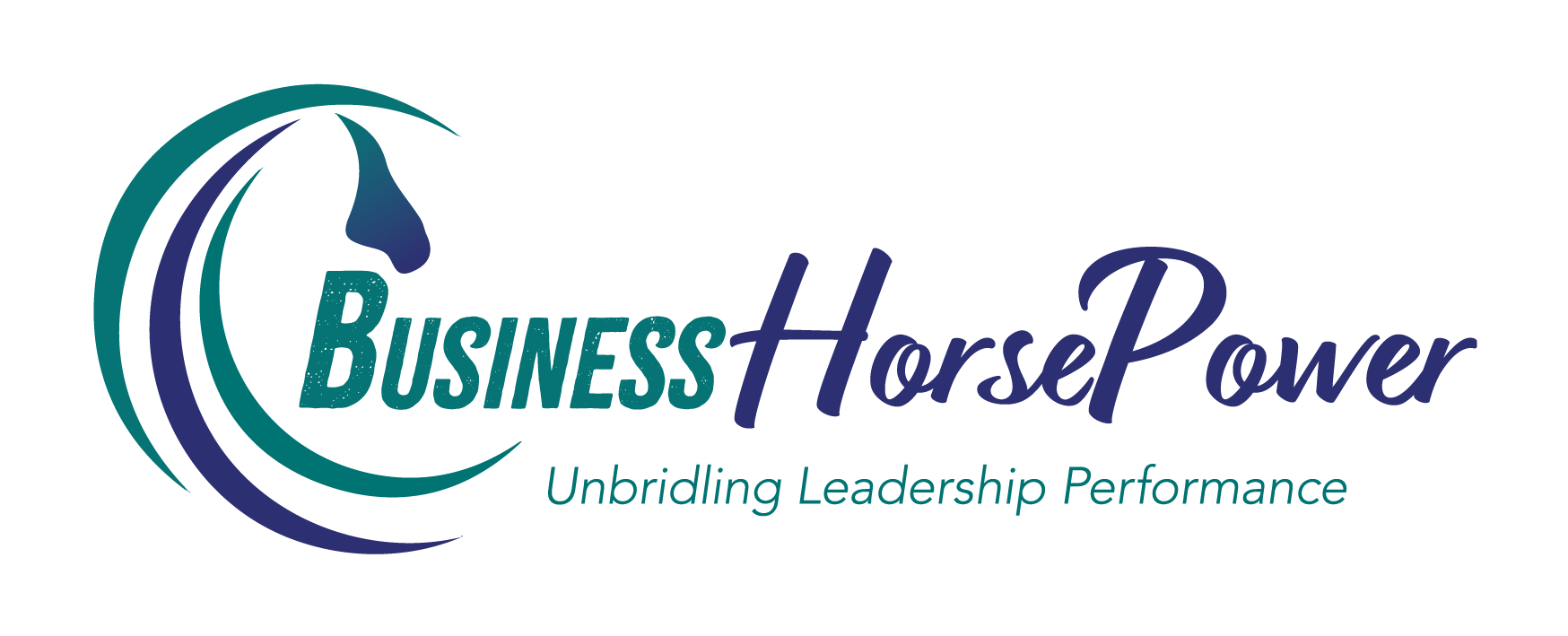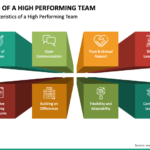


Trust Resources
Ready To Get Your FREE Resources To Build Trust? Discover what my horses taught me about trust in the chapter from my book called Trust The Process and Trust Your Intuition. Specifically you will learn: what is trust and why it is so important in business three...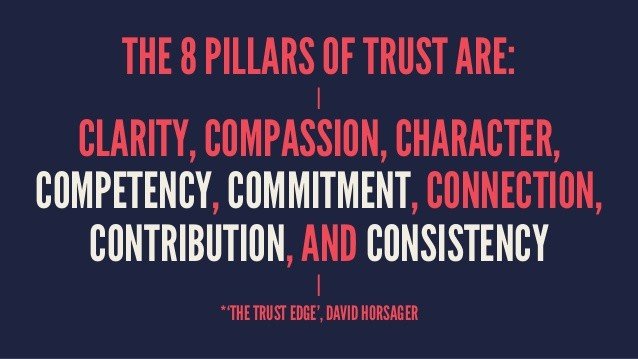
How To Build Trust in Organisations
So how do we build trust in organisations?. What actions can leaders take to create a trust based culture where team members feel fulfilled and give of their best of each and everyday? .
In the book the Trust Edge, eight pillars of trust are identified that when used together help individuals and therefore organisations to become more trustworthy. These are:
1. Clarity
People trust the clear and mistrust the ambiguous. Clarity unifies and motivates, it increases morale and inspires trust. Clear communication leads to trusted colleagues, happy team members and satisfied customers.
2. Compassion
People put faith in those that care beyond themselves. Caring leads to trust. Great leaders think beyond themselves and put people before thongs to improve relationships.
3. Character
People notice those who do what is right over what is easy. Building integrity tales work but also yields the biggest rewards. Great leaders always ask: “Is this the right thing?”
4. Competency
People have confidence in leaders who stay up-to-date with relevant new ideas and concepts. As a leader make sure to continually stretch your mind to discover new ideas, fresh thoughts and concepts. Engage in continual learning and surround yourself with inspiring and motivating people, who challenge you
5. Commitment
Passion is the essential ingredient of commitment. When people are committed to a cause they will go out of their way to make things happen. People who stick with you when times are tough are those that you can trust.
6. Connection
People want to follow, buy from and be around people they like and trust. As a leader ensure you engage and collaborate with team members and customers and really listen to what they need.
7. Contribution
People respond to results. Give your attention, resources, time, opportunity and talent to make a difference. As a leader you must deliver results in order to be credible and be trusted.
8. Consistency
People love to see the little things done consistently. It gives them security and comfort. Trust is built over time so ensure the same quality of results is delivered every time to build trust.
When these eight pillars are implemented in organisations then leaders enjoy improved relationships, reputation, retention, revenue and results. Which of these trust pillars will you start implementing in your organisation today? What will be the impact on your ability to navigate change if you increase trust levels by just a few percentage points.
From my experience the most highly trusted organisations thrive as they enjoy higher levels of team engagement, morale productivity and innovation, all factors which enable the business to be agile and respond on-the-hoof to changing business situations.
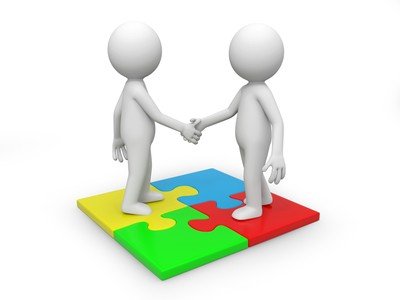
Four Ways To Help Build Trust In Business
“We can build our leadership upon fear, obligation, or trust. However, only a foundation of trust results in the collaboration and goodwill necessary to achieve our peak performance.”
These words, from organizational design expert Roger Allen, could hardly be more succinct in expressing the central role that trust plays in building and leading high-performance organizations. What is also very apparent to me is that this same principle holds true in developing relationships with my horses. Sure I could intimidate my horse, or force him, but in my experience this might simply get short term gains. Developing a meaningful relationship means that we need to invest in developing trust. It’s not the quick fix that many of us are looking for nowadays but the rewards are truly worth it.
With the integrity of our business leaders under such a microscope these days, it’s valuable to take a moment for a refresher on trust in leadership. For integrity, though critical to trust, isn’t the only element of a trust-based management style. According to Seattle-based management expert Stephen Robbins, trust is based on four other distinct elements in your relationship with the people you lead:
- Competence. At first this may seem strange—after all, can’t incompetent people be trusted? Of course, but not if you want to lead. Leaders are held to a different standard, and part of what your team trusts is that you know what you’re doing. It comes with the territory.
- Consistency. This is one of the most pragmatic elements of trust. If your team knows what you stand for, then they will believe that you will react in a predictable way to certain situations. Over time your consistently expressed values become the shared values of the team. Some charismatic leaders may purposely act unpredictably to “shake things up,” and they may well be wildly successful. But they won’t necessarily be trusted.
- Loyalty. To a certain extent, your team can only trust you to the degree you are committed to their success and well-being. Max De Pree, the legendary CEO of Herman Miller and champion of the “servant leader” concept, puts it this way: “The leader’s first job is to define reality. The last is to say thank you. In between the leader must become a servant and a debtor.” This servant/debtor relationship to your team is one that strongly conveys your loyalty to them.
- Openness. Trust is ultimately the characteristic of a relationship, and it is through its relationship with you that your team expresses its trust. Openness is a cornerstone of the ability to build these relationships. If your team can’t get to know you, then they probably can’t get to trust you, either. With openness comes the requirement for a certain vulnerability: in this arena, you will generally have to “go first” by reaching out and creating such relationships.
By investing in building and strengthening these qualities in your leadership, you will be steadily reinforcing your trust relationship with the people who work for you. Those relationships, in turn, become the foundation for building a high-performance organization, particularly in times of change and stress, when people tend to rely upon their personal relationships. If your team trusts you in good times, they are even more likely to stand with you when the times turn challenging.
If you are interested in learning how to develop trust in your organisation to drive business performance then please connect with me to schedule an Unleash Your Profit Potential Strategy Session.

Trust Anchors Every Successful Collaborative Team
Trust “is both a mindset and a toolbox for 21st-century leadership”. Robert A. McDonald, Chairman, President and CEO, The Procter & Gamble Company
In today’s networked world, Trust has become the new currency – the critical competency for individuals, teams, organisations and even countries. Trust impacts every situation and relationship whether personal or professional.
Trust acts like a lubricant. It reduces friction and creates conditions for evolving high performance teams. How well the team works together is the true indicator of future success or the ability to manage through the struggle of relentless change. Without trust there would be no harmony in the team and business and dis-ease would prevail.
When we work in a high trust team things get done quicker and more easily. There is less conflict, less back-stabbing, less politics and more time spent on value added activities like innovative and customer service.
However, trust within teams does not happen overnight. As Joachim Low, the winning German Football Team World Cup coach noted “We’ve been together now for 55 days. We started this project 10 years ago, so this is the result of many years’ work, beginning with Jurgen Klinsmann. We’ve continued that work and our strength has been our constant progress. We’d not made this ultimate step before, but champions do what they will do. We believed we’d win it. We’re looking back over ten years of preparation and hard work. This team has developed a spirit which is unbelievable. We’re proud to be the first European team to win a title in Latin America, in Rio, in Brazil, in a footballing country par excellence… and this makes us proud.”
So what are the four key actions that team members must cultivate if they are to build and maintain trust with their fellow team members:
Commitment
Commitment is an important part of building trust. Every team member must acknowledge they play an important role in creating the success of the team and helping it achieve its goals. When one team member fails to deliver it has a knock on effect on everyone else in the team. This is why no matter if personal or professional obstacles present them team members must seek ways to keep their commitment to the team. Just as they need to rely on others, others must be able to rely on them.
Competence
Team members must trust that their teammates are competent and can successfully complete the tasks relevant to the team’s success. For example, each team member should be able to focus on an assigned task without worrying about teammates following through with their assigned tasks. Individual team members must realize when they need help and ask for it, instead of concealing weaknesses from the group. When team members show vulnerability to their teammates and the teammates respond in an efficient and helpful manner, trust will grow between them.
Communication
Consistent and meaningful communication is necessary for building a trusting relationship within a team. For instance, if a team member finishes a task early, they should communicate to their teammates that they are finished and ask if they can help another team member with their part of the work. If one team member discovers vital information that is relevant to the team’s success, such as a deadline change or a lack of resources, they should communicate it to the other members as soon as possible.
Collaboration
True collaboration won’t happen without a sense of trust between team members. When team members collaborate, they share creative ideas without fear that another team member will take credit for their ideas. Through collaboration innovative ideas are born. It is definitely a case of 1+1=3. When team members trust each other they are more likely to show their vulnerability, which in turn will build more trust within the team.
In summary trust anchors every successful team. When team members demonstrate commitment, competency, communication and collaboration then others will trust them and superior performance will result both in terms of productivity and profitability. However, when a team is forming who do you trust? In the words of Ernest Hemingway “The best way to find out if you can trust somebody is to trust them.”. Building trust is a two way street as you need to give trust in order to get it.
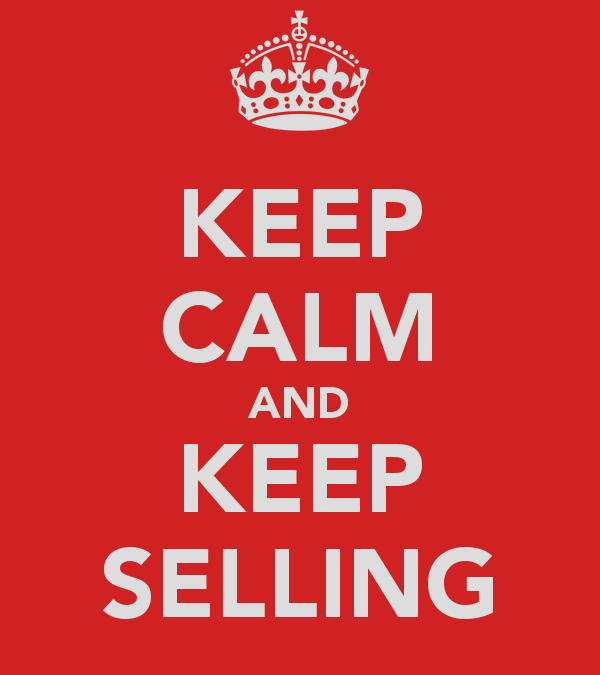
From “Selling” to “Serving” – 5 Steps to Becoming A Trusted Sales Adviser
Starting a business on your own has many challenges. For many people, the biggest one is “selling.” You can’t grow your business if you don’t sell your products and services to someone.
Yet, for many, “selling” brings up visions of sleazy used car salesmen who try to manipulate others to get what they want. Who wants to be like that? So, you’re faced with this dilemma: How do you grow your business and be a good, authentic, loving person at the same time?
The secret is to transform “selling” into “serving.” Let me show you how you do that.
Changing the Game
Selling is sleazy when it’s manipulative. Let me convince you to do something so I’ll get what I want.
If you want to grow your business, and feel good about yourself at the same time, it’s necessary to change the way you think about “selling.”
Everyone buys things. If you provide a product or service that has real value and helps people solve real problems, there is someone who will want to buy it. That someone is struggling with the problem you are prepared to solve. They wouldn’t want a solution if solving the problem wasn’t important to them. So if you can help them solve their problem and do a good job of it, you have become their new best friend. They not only will want to buy what you have to sell, they will want to buy from you again and again because now they have begun to trust that you are someone who can help them solve their problems.
When you are able to shift your thinking from “I’m selling something” to “I’m serving someone by helping them solve a problem that they care about,” you’ll find yourself feeling great when that someone buys your stuff. Here are 5 ways to make that shift.
Step #1 – Get Clear on the Value You Offer
It all begins with you understanding what are the problems you are uniquely qualified to help your clients or customers solve. Knowing where you are most trusted in business is a great place to start and you can do this by taking the free Trust Test at http://bit.ly/trusttest
But you can’t stop there. What problems does your product or service address? What resources do you bring to help your customer or client solve those problems? Why should people believe that your proposed solution really works?
Make a list of the problems and then list how your product or service solves each problem. Make a list of the resources your customer or client will have at their disposal when they purchase your product or service. Then gather testimonials, endorsements, case studies and anything else that will demonstrate your solution really works.
It’s been found that people are 10 times more likely to respond to a solution to a problem they have than they will to an opportunity to achieve something they want. So, make sure you really understand how you can help others solve their problems.
Step #2 – Understand Your Client/Customer/Partner’s “Critical Need”
Once you’ve understood in general the types of problems you are uniquely qualified to solve, the next step is to understand who has those sorts of problems and would be attracted to your particular solution.
You may think that everyone needs what you have, but that’s never true. Even if we assume everyone has the problem you’re solving, only certain types of people will be attracted to the way you solve it.
Apple has done an amazing job of helping people solve problems they didn’t even know they had–like the ability to carry their entire music library with them in a pocket size device, or to watch TV shows or videos on a book size device. Most people will agree that Apple’s products are good quality. And just about everyone wants to listen to music or watch videos these days, but not everyone is going to buy an Apple iPod, iPhone or iPad. For some the products are too expensive. For others, the products don’t go well with other equipment they already use. Apple’s success has been successfully targeting people who are willing to pay more for a product that helps them feel special and unique while being useful at the same time.
I define your perfect alliance partner as “that person or organization for whom you are uniquely qualified to fulfill their most critical need and in fulfilling that need you fulfill your own critical need at the same time.”
You’re in the business of solving problems. Step #2 is about finding the people who have those problems and consider them significant enough that they’re willing to pay to solve them.
Step #3 – Build Trust
People will only buy from or work with people they trust. These days, building trust begins by establishing a relationship with people who have the problems you are prepared to solve. You build trust by getting testimonials, endorsements, or case studies from people who have benefited from your products or services. You can also build trust by demonstrating you have had success in the past. And you can build trust by offering knowledge, service, or even products for free so that your potential customers and clients have the chance to see how well you can help them solve their problems.
You can read some of of my clients at https://www.businesshorsepower.com/success-stories/
Step #4 – Remove the Perception of Risk
Anytime someone purchases something there is a risk that it won’t serve their needs. To the extent you can show others that the risk that your product or service will not provide the promised value is very low, the more likely it is that people will be willing to invest in what you offer them.
One simple way to reduce risk is to offer a guarantee. If they’re not happy, they can return the product or service and get a refund within some period of time. A guarantee allows the customer to see if the promise matches up to their experience.
But you can reduce risk in other ways as well. You can offer additional bonuses and extras for free so the value customers receive is so much greater than what they’re paying that they feel the risk of not being satisfied is low.
The more you build your reputation, the less risky people will feel about doing business with you. When you have endorsements or support from well-known or trusted authorities, you inspire confidence that you can deliver on your promises.
Step #5 – Genuinely Care About Your Customer (this is the most important one)
When you see yourself as “serving” rather than “selling” then you let go of your attachment to “making the sale.” Your focus and concern is with making sure that your customer really has a need you (or your products and services) are uniquely qualified to fulfill. This is the place where the Golden Rule comes in: treat your customers as you would want to be treated. Your job is no longer trying to sell anyone. It becomes identifying people who have problems you can solve. These are the people you are here to serve and serving them becomes fun.
Going Deeper – Join Me at the Get Clients Fast Telesummit
On Thursday 10th July at 10am GMT I am being interviewed by Helen VandenBurghe as part of the Get Clients Fats Summer School about Mastering The Inner Game of Sales: 5 Secrets To Becoming a Trusted Sales Adviser So You Can Effortlessly Convert Prospects Into Clients
How would you like getting clients to become an effortless task that you actually enjoyed?
Wouldn’t you just love prospects to be magnetically drawn to you?
This is possible when you fundamentally change your mindset and energy about sales and instead become a trusted sales adviser. I’ll be sharing with you:
• #1 mistake that most sales people make when talking to clients
• My proven 5 steps formula to becoming a trusted sales adviser
• 7 mindset traits of successful trusted sales adviser
and much more…..
You can join the call for free, simply register at: http://www.getclientsfast.net

#1 – What Is IMPACTFUL Teamwork?
“It’s not finance, it’s not strategy, it’s not technology, it’s teamwork, that remains the ultimate competitive advantage. Because it’s both so powerful and so rare.” These words of Patrick Lencioni have inspired me over the years...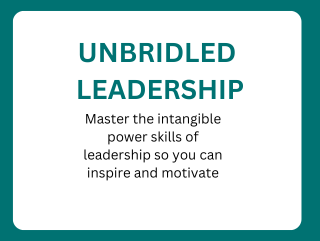
Business HorsePower New Front Page
Harness The Energy Of Your PeopleEffective Teamwork is your competitive advantage. When you enable every team member to find their role and maximise their contribution your business results accelerate Click Here What We Do: Our Proven Solutions Our Vision Leveraging...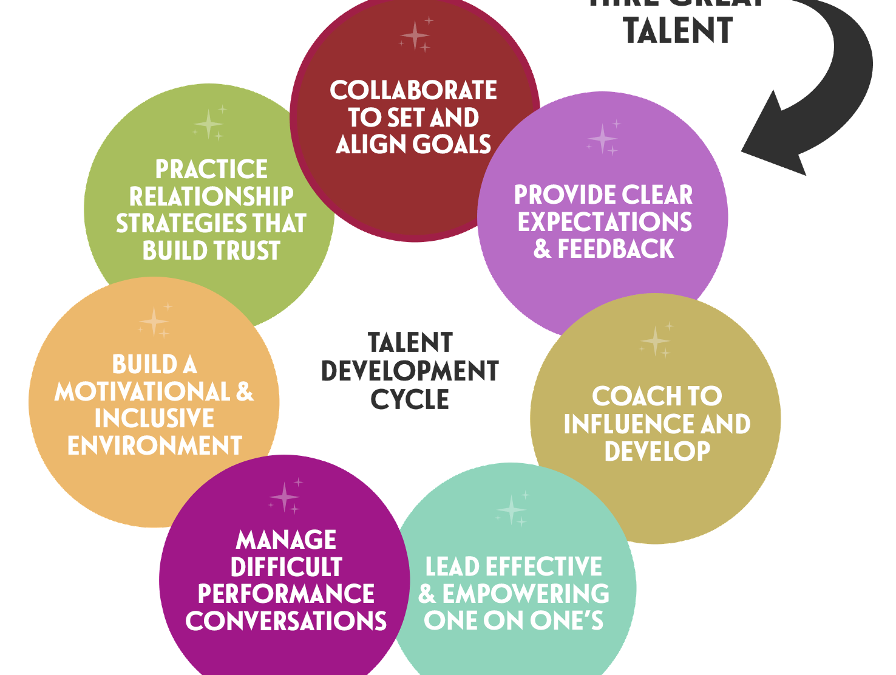
Unbridled Talent Development
Unbridled Talent Development New Talent Development Providing team members with effective training makes business sense. However, all too often people are promoted to mangers and not given the training they require. This results in: poor performance frustration break...
What We Can Learn About Collaboration From Nature
Increasingly business leaders are realizing that if they are to thrive in today’s volatile, uncertain, chaotic, and volatile (VUCA) economy they need to fully embrace the power of collaboration. The old models of command and control leadership fuelled by competition are simply not sustainable business models in a world where uncertainty dominates everything we do.
What is Collaboration?
The Cambridge Dictionary defines collaboration as “to work with someone else for a special purpose”. And it typically involves two or more people, teams, or organizations combining their resources to achieve the goal. It is a win-win situation where the sum of the parts ends up being more than the whole. One party contributes something that is built on and then leveraged by the other party. The end result is something much better than any of the parties could have achieved individually.
However, in my experience, many people think collaboration means one person or entity has to relinquish something to make the collaboration work. This would be an example of a win-lose relationship and that is not what we are striving for here.
Collaborative Examples In Nature
Nature understands how collaboration works and there are many examples that we can see around us. A few include:
- Ants and bees working in collaboration and in collective ways to establish their hives and colonies
- Sea anemones and clownfish cultivate cooperative relationships with each other to provide protection and nutrients
- Water buffalo have a symbiotic, collaborative relationship with egrets. The egrets pick parasites out of the water buffalo’s skin, which in turn provide a source of nourishment for them. They also provide a warning system of any impending danger for the water buffalo
One of the reasons why nature values collaboration is because it understands and appreciates the inter-dependence and inter-connectedness of everything. Nothing happens in isolation in nature. Everything has an impact on something else, which is a principle that many of us have not yet grasped. Because the reality of the situation is that everything that I do ultimately impacts and influences you in some way. You might not see the direct impact right now, but trust me it will. This is because everything in the world is comprised of energy and so each of us creates an impact ripple that expands either positively or negatively.
Collaborative Leadership
Collaborative principles can be applied to all areas of business including leadership. Long gone are the days when anyone leader can know everything there is to know. That is simply not possible in this Information Age where leaders are inundated with information. We are literally drowning it in.
A New York Times Weekly edition contains more information than the average person in the seventeenth century would have come across in their entire lifetime. In 2008 we consumed three times as much information as in 1960, and by 2020 it is estimated that we generated 44 times more data than we produced in 2015. This is why smart leaders are now embracing the concept of collaboration in leadership through a process called Shared Leadership.
Shared Leadership occurs when two or more people decide to work collaboratively together to lead the team or project. The benefit of this approach is that the “best” leader can step up and lead at the most appropriate time. For example, some leaders provide the best ideas when a project is just starting out; other leaders are better at setting and maintaining the direction; others are great at rallying the team and getting others on board; whilst other leaders are better at implementing and getting things done; finally others are better at refining and improving the product or service. Imagine how much more effective the leadership could be in your business if multiple people collaborated in the shared leadership process.
A fabulous model of how to embrace Shared Leadership exists in nature and specifically in herds of wild horses. They utilize the Diamond Model of Leadership as a way to collaborate and share leadership, using three different leadership positions.
- Leading from the front
- Leading from the back
- Leading from the middle
The lead mare sets the direction and pace of the herd from the front of the diamond formation. She pays attention to what is happening in the environment and then makes a decision on where to go next. The lead stallion keeps the herd together and protects it from predators and is positioned at the back of the diamond. He influences the energy at which the herd moves. The rest of the herd, the sentinels, cover the other two points of the diamond, and lead from the middle, covering the outer sides of the diamond. Their role is to align the herd in the direction that has been set and detect potential threats coming from the side In addition to responding to threats, the sentinels are often the ambassadors of the herd and are the first to welcome new members.
The ever-present goal of herd leadership is health, harmony, and unity. With the unpredictability that nature ensures, herd leaders are often presented with challenges that require them to either reposition themselves to respond to changes in the environment or possibly even change roles to leverage their strengths differently. For example, when a threat emerges, like the new presence of a stranger or predator, the sentinel will often move from the center of the herd to the front where the threat appears. The sentinel will often redirect the herd away from danger. Once the lead mare senses the direction to safety, she will emerge back in front of the herd to set the new course. Once safe movement begins, the sentinel will return to the centre position.
Collaborative leadership has enabled horse herds to exist for over 50 million years as they have learnt to adapt and evolve to thrive in the uncertain environments they have experienced.
I’d love to hear from you about other collaborative relationships you’ve seen in nature and how you can apply these to your business.
